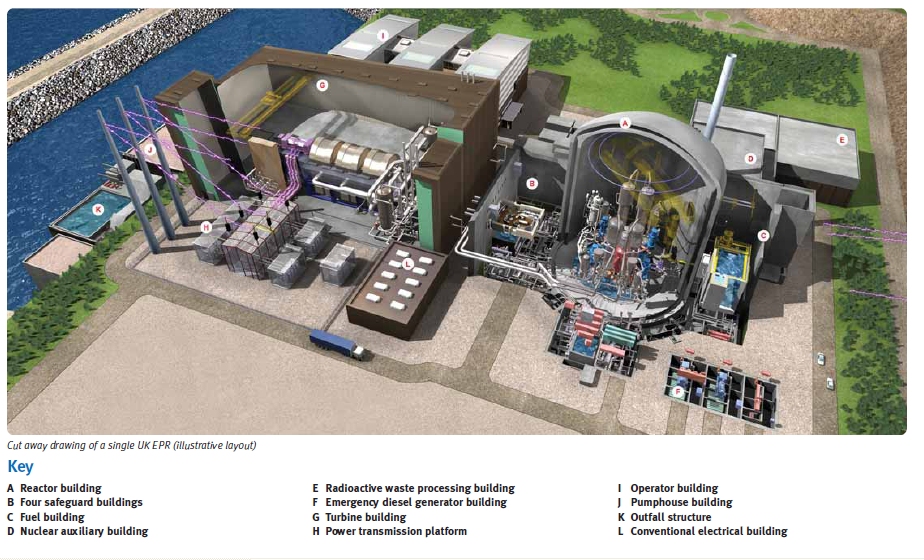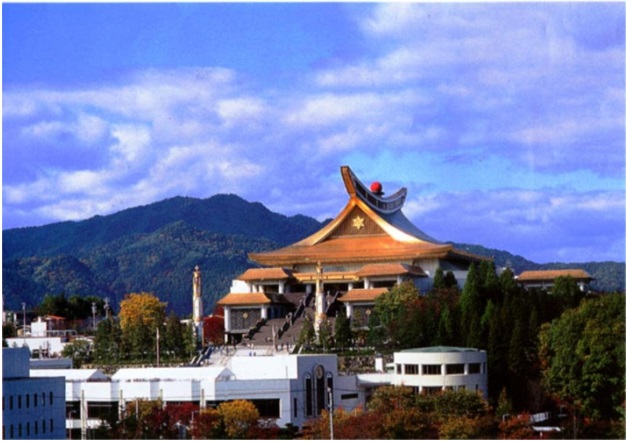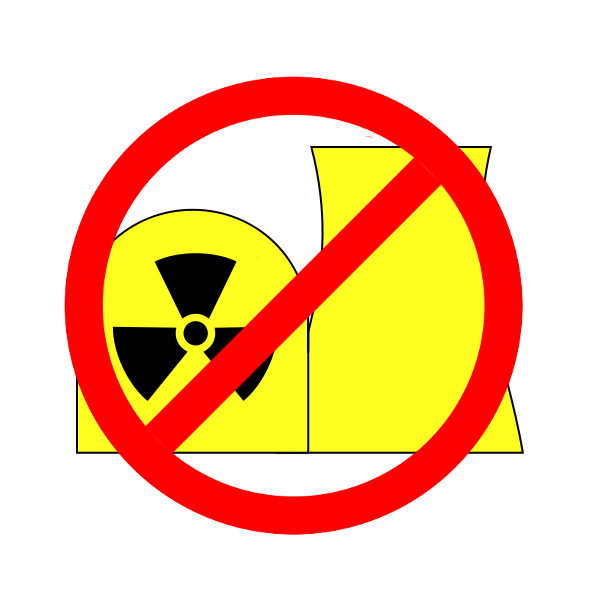
Blog
-
Geiger Readings for December 28, 2013
Ambient office = 69 nanosieverts per hourAmbient outside = 59 nanosieverts per hourSoil exposed to rain water = 82 nanosieverts per hourVine ripened tomato from Top Foods = 114 nanosieverts per hourTap water = 81 nanosieverts per hourFiltered water = 67 nanosieverts per hourAlaskan Copper River Salmon = 77 nanosieverts per hour -
Nuclear Reactors 99 – European Commission Investigates Hinkley Point EDF project in the U.K.
Last week the European Commission (EC) began an investigation into the support that the British government is giving to the project to construct a new reactor at Hinkley Point C in Somerset. The Chinese have bought into the project which has concerned some departments in the British Government that deal with foreign investment in British projects. Two Areva ERP reactor reactors are to be built by EDF, the French nuclear contactor. The new reactors are expected to be generating over three gigawatts of electricity by 2023.
The EC is questioning whether the involvement of the British Government in the project to ensure predictable revenues for EDF for the next thirty five years will violate European Union (EU) rules covering state aid for commercial ventures. The British government could end up providing as much as twenty seven billion dollars to EDF depending on actual capital costs that EDF incurs. EU law says that a member state can give support to a commercial venture only to the extent that that commercial venture could have gotten the same level of support from the marketplace.
The deal between the British government and EDF stipulates that if the future price of electricity drops below the agreed level, the British government will step in and pay EDF the difference. On the other hand, if the price of electricity rises above the market price, EDF will pay the difference to the British government. The British government explains that this will guarantee that the plant operator will “receive a fixed level of revenues and will therefore not be exposed to market risks for the duration of the scheme.”
The British government offers the same guarantee to low-carbon energy sources including renewables such as wind and solar. Each type has a set strike price which the government supports. However, nuclear power plants do not have the same sort of blanket guaranteed support. Each nuclear project has to considered individually.
The EC is worried that British governmental support could potentially distort the British energy market and even affect the entire EU energy market. This investigation is timely in that the British government has recently announced plans for a massive build up of nuclear power generation to bring sixteen gigawatts of new nuclear capacity online by 2030. If they provided the same sort of support for all the new reactors that they are planning for the Hinkley Point project, this could have a big impact on the EU energy market. In order to be successful, the investigation will need to have cooperation from all the public and private players involved in Hinkley Point.
In the United States and other nuclear countries, the sort of price support the British are offering EDF for Hinkley Point are being abandoned in favor of letting nuclear power compete in the open energy marketplace. This change is already making conventional investment source reluctant to bet on nuclear given that there is an oil glut in the international market and cheap natural gas is lowering the price of electricity. Even renewable electrical generation such as wind and solar are beginning to beat out nuclear in bids for new generation capacity. I have said it before and I will repeat it. Nuclear power is just not commercially viable.
Cutaway drawing of a U.K. ERP reactor:
-
Radiation News Roundup December 27, 2013
-
Geiger Readings for December 27, 2013
Ambient office = 65 nanosieverts per hourAmbient outside = 98 nanosieverts per hourSoil exposed to rain water = 92 nanosieverts per hourVine ripened tomato from Top Foods = 104 nanosieverts per hourTap water = 73 nanosieverts per hourFiltered water = 61 nanosieverts per hour -
Nuclear Weapons 59 – Japanese Nuclear Doomsday Cult
Various religions and cults have predicted the imminent end of the world for thousands of years. Some have been content to merely comment while others have actively sought to prevent it and others work to make it happen. There has been a worrisome trend among Christians who believe that we are currently in what they call the End Times and that Jesus will soon return to judge mankind. The Christian Dominionists believe that the U.S. should become a theocracy before the world ends. They have members and supporters in the U.S. Congress. Some of the U.S. support for Israel is predicated on the idea that certain things have to happen in the Middle East before Jesus can return. The reason that I bring up the subject is that I recently read about a doomsday cult in Japan that believes that nuclear war will inevitably destroy the world.
The Japanese cult called Sukyo Mahikari is said to be the fastest growing doomsday cult in the world with over a million members. They believe in Jewish Freemasons are conspiring to take over the world. The holy book of the cult is called the Goseigen or the “Book of Warnings.” It was “revealed” by the “Creator God” to Yoshikazu Okada in the early 1960s. The book says that the “perishing , ending and collapse of civilization is imminent ” and that “the subhumans will be destroyed in nuclear fireballs. It says that “Earth must be burnt away with the Ball of Fire in order for God to descend from Heaven” and “the production of fireballs in the world cannot be stopped.” The chosen – members of the cult – will create a new holy Japanese empire after the necessary purging of the unworthy.
The cult enjoys the support of high level politicians such as the neo-nationalist Shintaro Ishihara who is featured in cult literature and referred to as a friend of Okada. In order for an organization to have legitimacy in Japan, it must be sponsored by influential people. Ishihara was the mayor of Tokyo and became a leader of the Japan Restoration Party which was founded in 2012. It is dedicated to “reasserting Japan’s correct place in the world.” They currently have fifty four seats in the lower house of the Japanese Diet and nine seats in the upper house. They are opposed to the close relationship of the U.S. and Japan.
Mixing politics and religions is a very bad idea. When doomsday religion intrudes into the halls of power, there is a danger that policy decisions might be aimed at bringing about the apocalypse, not avoiding it. Japan is a powerful industrial nation with mature nuclear industry. Their constitution forbids them from having nuclear weapons but there have been calls for that prohibition to end. With their plutonium reactor and their technological expertise, it would not take long for Japan to build nuclear weapons and delivery systems if they wanted to. Considering the unstable regime in North Korea which has been threatening Japan with nuclear attacks and the new belligerence of China in claiming control of disputed islands to the south of Japan, there is very real pressure on Japan to become a nuclear nation. If that should happen and the Mahikari cult continues to gain adherents and political power, the danger of a nuclear exchange in western Pacific increases.
Sukyo Mahikari Temple Number 2:
-
Geiger Readings for December 26, 2013
Ambient office = 116 nanosieverts per hourAmbient outside = 111 nanosieverts per hourSoil exposed to rain water = 121 nanosieverts per hourVine ripened tomato from Top Foods = 84 nanosieverts per hourTap water = 140 nanosieverts per hourFiltered water = 126 nanosieverts per hour -
End of Year Wrap Up for 2013
I have been blogging on radiation, radioactive materials, nuclear power and nuclear issues for about a year and a half now. During that time I have learned an enormous amount about nuclear issues. Being completely honest, I will say that I have never been a fan of nuclear power. When I was a kid during the cold war, we had nuclear attack drills and people were building bomb shelters. I resented the fact that it was possible that international tensions could escalate to the point where a nuclear war could end human civilization. At least now we are working hard on nuclear disarmament and the major nuclear arsenals have been significantly reduced but there is a worrying trend in nuclear nations towards “modernizing” their nuclear forces that may slow down disarmament. And then there are countries like Iran and North Korea who are working on acquiring or multiplying nuclear warheads while spouting violent rhetoric.
Nuclear power has had a bad year with several U.S. reactors being closed because they can no longer compete with cheap natural gas. (Don’t get me started on fracking!) Most of the reactors in the U.S. are nearing the end of their operational life-spans and one reactor was shut down because it became too expensive to repair. Other U.S. reactors are at risk from floods or lakes, rivers and the ocean becoming too hot to use for cooling. There is talk of reaching peak uranium production this year which means there will be price spikes and shortages coming. There is still no permanent nuclear waste repository in the U.S. and all the spent fuel pools at the U.S. reactors will be full of old fuel rods in a few years. All in all, the prospects of the U.S. nuclear industry are not very bright.
The nuclear industry is not taking all this lying down. There is a major push to promote nuclear power as the answer to carbon dioxide generation and climate change. For a lot of reasons, this is not really a good idea. New small modular reactors are being developed but do not exist yet. There is a major push among nations with mature nuclear industries to sell reactors to developing nations. This is a very bad idea because of problems with oversight, corruption, political pressure, water, waste and other issues.
In Japan Fukushima continues to be a huge problem that has largely faded from the headlines but is still leaking radiation into the Pacific Ocean which will impact the west coast of the United States. They are in the process of removing fuel rods from the damaged spent fuel pool of the Unit 4 reactor. If they screw up, it could cause fires, explosions and a huge release of radioactive materials into the atmosphere and could threaten the whole northern hemisphere.
As I said at the beginning of this post, I have never been a fan of nuclear power. All that I have learned has convinced me that I was right from the start and that nuclear power generation poses a much bigger threat to the world than any benefit it could possibly supply. In my own small way, I am trying to educate people about the problems with nuclear power and hopefully contribute to the end of this dangerous and fantastically complicated way of boiling water.
In conclusion, I would like to thank my readers and encourage them to tell others about my blog. I would also like to wish everyone Happy Holidays and I hope that 2014 will be a good year for everyone.
-
Radiation News Roundup December 25, 2013
New model shows U.S. was hit by Fukushima cloud that dispersed little over Pacific. enenews.com
Japanese expert says that the Fukushima cleanup is a “comedy of errors.” youtube.com
Kim Jong-Un has warned war could break out “without any prior notice” amid heightened tension on the Korean Peninsula. aljazeera.com
-
Geiger Readings for December 25, 2013
Ambient office = 81 nanosieverts per hourAmbient outside = 111 nanosieverts per hourSoil exposed to rain water = 81 nanosieverts per hourVine ripened tomato from Top Foods = 91 nanosieverts per hourTap water = 84 nanosieverts per hourFiltered water = 74 nanosieverts per hour






